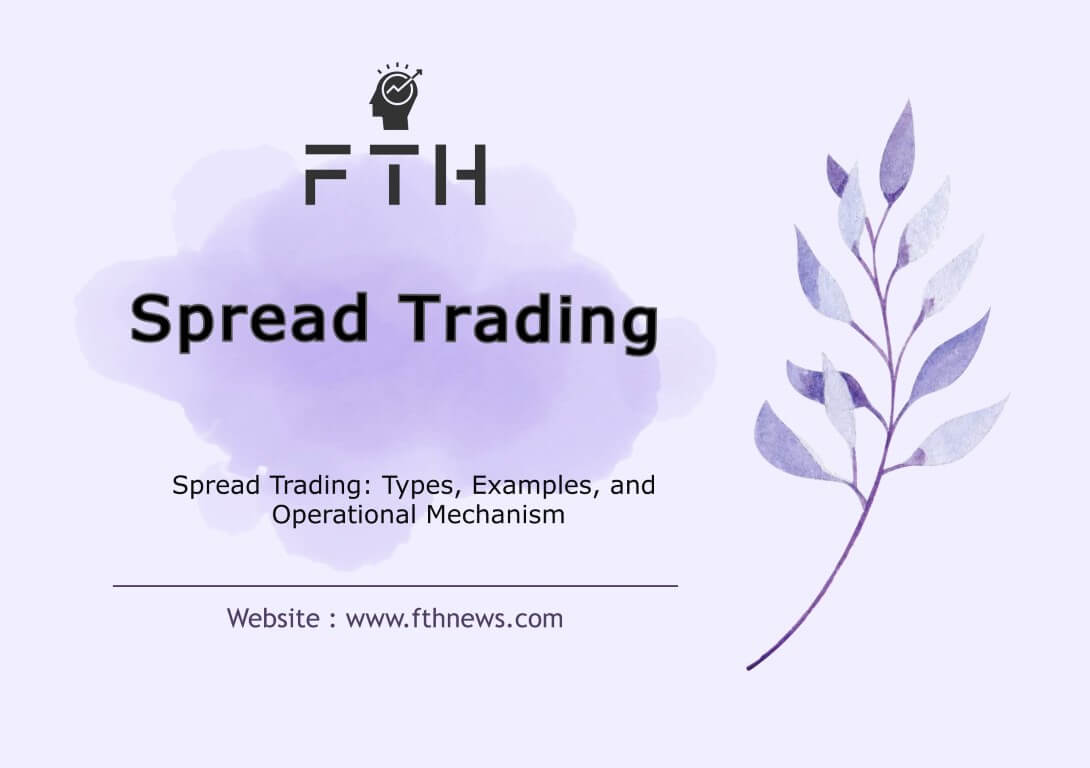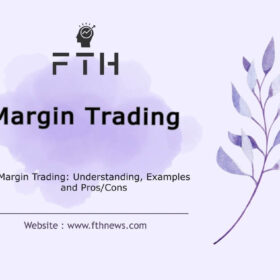
Spread Trading: Types, Examples, and Operational Mechanism
In the ever-evolving landscape of financial markets, one term stands out prominently in the world of Forex trading – “Spread.” For traders navigating the complexities of the market, comprehending and mastering the intricacies of spread is paramount. This blog post is dedicated to unraveling the layers of the spread, delving into its various types, and offering actionable strategies to adeptly manage and minimize its influence on your trades.
What is Spread Trading?
In the dynamic world of financial markets, spread trading emerges as a fundamental concept, particularly in the realm of Forex. Spread, at its core, represents the difference between the buying and selling prices of a financial instrument. It serves as a key determinant of transaction costs in Forex trading, a market renowned for its absence of conventional commissions.
Spread trading is not confined to a singular definition; rather, it encapsulates the essential mechanism by which traders navigate the pricing landscape. Whether it’s the EUR/USD pair or any other financial instrument, the spread becomes the pivotal factor influencing profit and loss dynamics. This section will delve into the intricacies of what spread trading entails, exploring its nuances and shedding light on its significance in the world of financial markets.
How Spread Works in Trading
Understanding the mechanics of spread is crucial for any trader seeking success in Forex markets. The spread, often measured in pips, is the numerical representation of the gap between the buying and selling prices. Take, for example, a scenario where the EUR/USD pair is priced at 1.1556 for buying and 1.1554 for selling – the spread, in this case, is 2 pips.
This numerical differential, however small, plays a pivotal role in determining the profitability of a trade. The market’s liquidity, volatility, and depth are reflected in the spread, making it a vital metric for traders. In the realm of Forex trading, understanding how the spread operates becomes paramount. It can either be variable or fixed, adding an additional layer of complexity to the trading landscape. This section will unravel the workings of spread, offering insights into its variability, and explore how traders can effectively utilize this knowledge in their pursuit of successful trading strategies.
Types of Spread:
In the intricate world of financial markets, the classification of spreads plays a pivotal role in shaping trading strategies. Broadly categorized into two distinct types – fixed and dynamic – the choice between them can significantly impact a trader’s approach and overall success. In the context of the Forex market, dynamic spreads, also referred to as variable spreads, emerge as the predominant choice, dynamically adjusting to the volatile nature of instrument values.
Fixed Spread: Stability Amidst Flux
Fixed spreads, as the name suggests, remain constant irrespective of market conditions. This type of spread is characterized by a predetermined and unchanging difference between the buying and selling prices of a financial instrument. While fixed spreads provide a sense of stability, they may pose limitations, especially in markets characterized by swift changes in liquidity and volatility.
Dynamic Spread: Adapting to Market Realities
Contrastingly, dynamic spreads exhibit a fluid nature, aptly referred to as variable spreads. In the ever-shifting landscape of the Forex market, dynamic spreads adjust in real-time based on market liquidity. This adaptability allows traders greater flexibility, enabling them to navigate fluctuations in prices more effectively. Variable spreads are particularly advantageous during periods of heightened market activity, offering competitive pricing reflective of the prevailing market conditions.
The Predominance of Dynamic Spreads in Forex
Given the dynamic and often unpredictable nature of currency markets, Forex predominantly employs dynamic spreads. The volatility inherent in instrument values necessitates a responsive approach, making variable spreads the preferred choice for traders. This adaptability allows for a more nuanced and strategic trading experience, aligning with the ever-changing dynamics of the financial markets.
Choosing Wisely: Selecting the Right Spread for Your Strategy
Understanding the distinctions between fixed and dynamic spreads empowers traders to make informed decisions aligned with their trading objectives. While fixed spreads offer stability, dynamic spreads provide the agility to navigate evolving market scenarios. Ultimately, the choice between them depends on the trader’s risk tolerance, market analysis, and overall trading strategy. By comprehending the nuances of these spread types, traders can optimize their approach, enhancing the potential for success in the dynamic realm of Forex trading.
Tips and Strategies For Spread Trading
Effectively managing spread costs is a critical skill that distinguishes successful traders in the dynamic world of Forex. Implementing practical tips and strategic approaches can significantly enhance your trading outcomes. Here’s a comprehensive guide to navigating and optimizing spread costs:
1. Pay Attention Before Opening a Position: The Preemptive Approach
Before embarking on any trade, conduct a thorough assessment of the prevailing spread. This preemptive approach allows you to anticipate potential costs and profits accurately. By being aware of the spread amount, you can strategically plan your trades, ensuring that your decisions align with your risk tolerance and profit objectives.
2. Wait for Profitable Conditions: The Virtue of Patience
Patience is a virtue in trading, and it becomes especially crucial when managing spread costs. Exercise restraint and wait for the market conditions to favor your trade. By allowing the price to rise above the spread before taking profits, you minimize risks and position yourself for more favorable trade outcomes. This disciplined approach is fundamental to long-term trading success.
3. Consider Liquidity: Navigating Market Depths
Understanding the relationship between liquidity and spreads is key. In periods of higher liquidity, spreads tend to be narrower, presenting an advantageous scenario for traders. Conversely, during low liquidity periods, spreads may widen, potentially increasing transaction costs. Be cautious when dealing with dynamic spreads in situations where market depth is limited, and adjust your strategy accordingly.
4. Account for Market Volatility: Adapting to Market Dynamics
Market volatility can significantly impact spread costs. During periods of low volatility, spreads might increase, affecting the overall cost of your trades. Stay vigilant and adapt your trading strategy based on prevailing market dynamics. Consider employing risk management techniques to mitigate the impact of volatility on your trades.
5. Instrument-Specific Considerations: Tailoring Strategies to Instruments
Recognize that each financial instrument has a unique spread rate. Conduct thorough research on the specific instrument you are trading and factor its spread into your strategy. Understanding the intricacies of each instrument’s spread dynamics allows for more informed decision-making, contributing to a more effective and tailored trading approach.
Mastering the art of managing spread costs requires a holistic understanding of market conditions, patience, and adaptability. By incorporating these practical tips and strategic approaches into your trading repertoire, you empower yourself to navigate the intricacies of spread costs successfully. Stay informed, stay patient, and tailor your strategies to the unique characteristics of each instrument, ensuring a more prosperous and resilient trading journey in the ever-evolving landscape of Forex.
Role of Spread Trading in the Forex Market:
Within the vast expanse of the Forex market, the spread assumes a pivotal role, acting as a linchpin that ensures the seamless flow of transactions between buyers and sellers. Understanding the dynamics of spread is crucial for any trader looking to navigate this global marketplace effectively.
1. Facilitating Transactions: Market Makers in Action
At the heart of the Forex market are market makers, entities that play a crucial role in facilitating trades. Market makers act as intermediaries, matching buy and sell orders to ensure the continuous flow of currency transactions. In this intricate dance of supply and demand, the spread emerges as a vital component.
2. The Spread as Compensation for Broker’s Risk
The spread serves a dual purpose – it not only facilitates transactions but also acts as compensation for the inherent risks shouldered by brokers. When a trader executes a trade, the broker takes on the risk of coordinating buy and sell orders, a responsibility fraught with potential market fluctuations.
3. Understanding the Fee Structure
Consider the spread as a nominal fee, a small but essential charge taken by the broker. This fee serves as a compensation mechanism for the risks involved in managing the intricate web of market dynamics. It’s this fee structure that allows market makers to navigate the challenges of coordinating transactions in a market where participants can be geographically scattered.
4. A Mechanism for Market Liquidity
Beyond risk mitigation, the spread contributes to market liquidity. By encouraging a consistent flow of transactions, the spread ensures that currency pairs remain accessible and tradable for participants across the globe. This liquidity is crucial for maintaining the efficiency and functionality of the Forex market.
5. Dynamic Adaptation to Market Conditions
In the dynamic world of Forex, the spread is not a static entity but adapts to the ever-changing conditions of the market. During periods of heightened volatility or low liquidity, the spread may widen, reflecting the increased risks and challenges faced by market makers. Conversely, in more stable conditions, the spread tends to narrow, offering traders a more favorable fee structure.
The Spread as a Catalyst for Market Harmony
In essence, the spread in the Forex market is not merely a numerical differential; it is a dynamic force that fuels the harmonious interaction between buyers and sellers. Market makers, by managing the risks associated with coordinating trades, ensure the integrity of this global marketplace. Traders, in turn, navigate this landscape with an awareness of the spread, recognizing its dual role as a facilitator of transactions and a mechanism for risk compensation. Understanding the intricacies of the spread not only enhances trading acumen but also contributes to the overall liquidity and resilience of the Forex market.
An example of how to Calculating Spread in Forex:
Understanding the intricacies of spread calculation is a foundational skill for any trader navigating the Forex market. Delving into a specific example, such as the GBP/USD currency pair, provides a tangible illustration of how this numerical differential influences trading outcomes.
1. The Essence of Spread Calculation
At its core, spread is the numerical representation of the gap between the buying and selling prices of a currency pair. Consider the GBP/USD pair with a current price of 1.1532. The buyer, eager to engage in the trade, pays 1.1534, while the seller receives 1.1530. The calculation of spread in this scenario involves subtracting the buying price from the selling price:
Spread=1.1534−1.1530=0.0004
2. Pips: The Unit of Spread Measurement
Expressed in pips, this numerical spread of 0.0004 translates to 4 pips. Pips, or percentage in point, represent the standardized unit for measuring price movements in Forex. In practical terms, this means that for every movement of one pip, the value changes by the fourth decimal place in most currency pairs.
3. Translating Pips into Profit: A Real-world Example
In the context of the EUR/USD pair, where a pip is commonly valued at $10 for a standard lot, the calculated spread of 4 pips equates to a potential profit or loss of $40 per lot. This real-world example highlights the direct impact of spread on trading outcomes. As traders engage in transactions of varying volumes, understanding this relationship allows for precise risk management and strategic decision-making.
4. Spread Dynamics in Forex Trading
It’s important to note that spread dynamics are not static; they evolve in response to market conditions. During periods of heightened volatility or low liquidity, spreads may widen, influencing the overall cost of trades. Conversely, in more stable market conditions, spreads tend to narrow, providing a more cost-effective environment for traders.
Mastering the calculation of spread in Forex empowers traders with a numerical insight into their potential costs and profits. By grasping the relationship between buying and selling prices, understanding the unit of measurement in pips, and translating these dynamics into real-world examples, traders can make informed decisions that align with their risk tolerance and trading objectives. As the numerical intricacies of spread become second nature, traders gain a valuable tool for navigating the dynamic landscape of the Forex market.
Strategies to Minimize Spread Costs
Effectively minimizing spread costs is a fundamental aspect of enhancing trading profitability in the dynamic realm of Forex. Implementing strategic approaches can significantly impact the overall cost structure of trades. Here are nuanced strategies designed to navigate and optimize spread costs:
1. Trade During Peak Hours: Capitalizing on Market Vibrancy
Engaging in trading during peak hours can be a strategic move to harness the vibrancy of the market. Peak hours coincide with periods of heightened market activity when multiple global financial centers are concurrently operational. During these bustling times, increased competition among market makers often leads to lower spreads. This competitive environment benefits traders, offering more favorable pricing structures and potentially reducing transaction costs.
2. Opt for Popular Currency Pairs: The Power of Liquidity
Selecting popular currency pairs is a strategic move rooted in the principle of liquidity. Currency pairs with high trading volumes attract a multitude of market makers, fostering a competitive landscape that results in lower spreads. Traders should consider opting for these popular pairs, as they tend to offer better pricing due to the increased number of market participants vying for transactions.
3. Understanding the Impact of Market Makers
Market makers play a pivotal role in influencing spread costs. These entities act as intermediaries, facilitating trades by matching buyers with sellers. During peak hours and with popular currency pairs, the presence of numerous market makers intensifies the competition, creating an environment where they strive to attract transactions with more competitive pricing. Traders can leverage this competition to their advantage, seeking out the most favorable spread conditions.
4. Consideration for Regional Trading Sessions
Beyond peak hours, understanding the overlap of regional trading sessions is crucial. There are specific windows of time when major financial centers, such as London, New York, and Tokyo, are simultaneously active. Trading during these overlapping sessions can amplify market activity, potentially leading to reduced spreads as market makers vie for transactions in a more dynamic and competitive environment.
5. Utilize Technology for Timely Execution
In the fast-paced world of Forex, the importance of timely execution cannot be overstated. Utilizing advanced trading platforms and technologies can help traders execute their orders swiftly during peak hours, ensuring that they capture favorable spread conditions before they potentially widen.
Strategies to minimize spread costs in Forex require a nuanced approach that blends an understanding of market dynamics, preferences for popular pairs, and an awareness of peak trading hours. By strategically aligning trading activities with times of heightened market activity and opting for currency pairs with robust liquidity, traders can enhance their overall profitability. As technology continues to advance, embracing the tools available for precise execution during peak hours becomes integral to mastering the art of spread cost management in the ever-evolving landscape of Forex trading.
Conclusion: Mastering the Spread for Successful Trading
In the complex world of Forex trading, understanding the concept of spread and effectively managing its impact on your trades is crucial. By grasping the nuances of spread types, calculating spread in Forex, and implementing strategic approaches, traders can navigate the market with greater confidence and achieve more favorable outcomes. Stay informed, be strategic, and master the spread for successful trading in the dynamic world of finance.
FAQ
Spread in trading is the difference between the buying and selling prices of a financial instrument.
Yes, spread trading can be risky as it involves market uncertainties and potential losses due to price fluctuations.
Traders make money on spreads by capturing the difference between buying and selling prices or utilizing strategies involving options or futures contracts.
In Forex, if the EUR/USD pair has a buying price of 1.1556 and a selling price of 1.1554, the spread is 2 pips.














